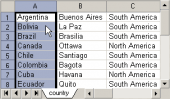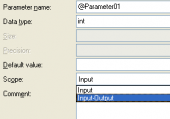MS SQL Maestro online Help
| Prev | Return to chapter overview | Next |
Editing queue properties
Use the Receive messages link on the Navigation bar to open SQL Editor with a corresponding query. Execute the query to receive messages (with their deleting from the queue data).
You can also change queue properties here. The detailed description is given below.
Common options tab represents the name, owner and ID of the queue. By default, only the owner of an object can perform various operations with the object. In order to allow other users to operate it, privileges must be granted. (However, users that have the superuser attribute can always access any object.)
Status
Use the checkbox to specify whether the queue is available (ON) or unavailable (OFF). When the queue is unavailable, no messages can be added to the queue or removed from the queue.
Retention
Specifies the retention setting for the queue. If checked, all messages sent or received on conversations using this queue are retained in the queue until the conversations have ended. This allows you to retain messages for auditing purposes, or to perform compensating transactions if an error occurs
Note: Setting the retention ON can reduce performance. This setting should only be used if required to meet the service level agreement for the application.
Activation options (Procedure name, Status, Max readers, Execute As)
Specifies information about the stored procedure to activate to process messages in this queue:
Procedure name
Specifies the name of the stored procedure to activate to process messages in this queue. This value must be a SQL Server identifier.
Status
Specifies whether or not Service Broker activates the stored procedure. When checked, the queue starts the stored procedure specified with Procedure name when the number of procedures currently running is less than Max readers and when messages arrive on the queue faster than the stored procedures receive messages. When unchecked, the queue does not activate the stored procedure.
Max readers
Use the field to change the maximum number of instances of the activation stored procedure that the queue starts at the same time. The value of readers must be a number between 0 and 32767.
Execute As
Specifies the SQL Server database user account under which the activation stored procedure runs. SQL Server must be able to check the permissions for this user at the time that the queue activates the stored procedure. For an NT domain user, the server must be connected to the domain when the procedure is activated or activation fails. For a SQL Server user, the server can always check permissions.
| Prev | Return to chapter overview | Next |





 Download
Download Buy
Buy
